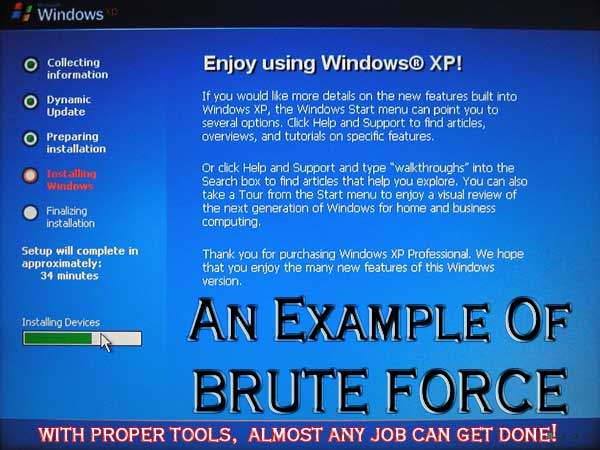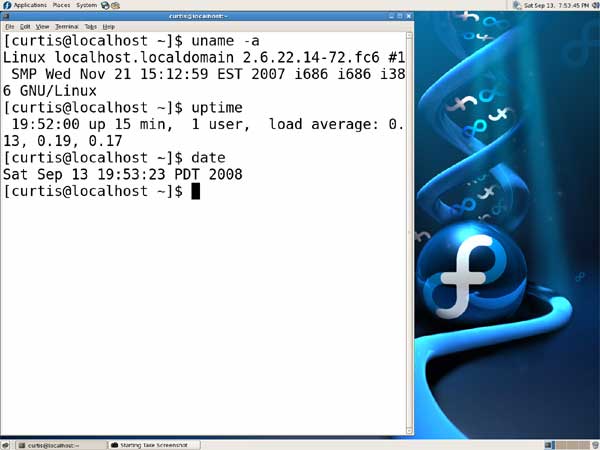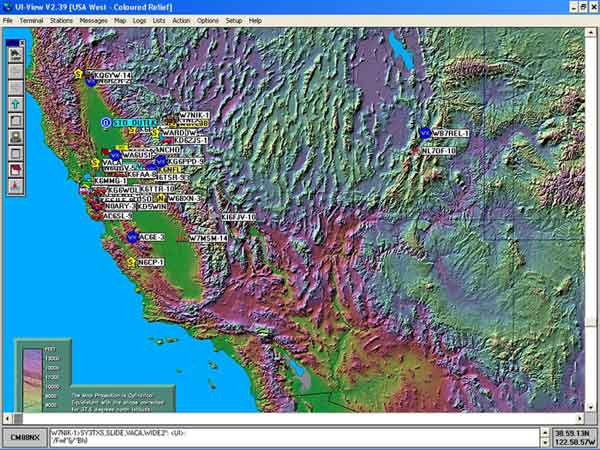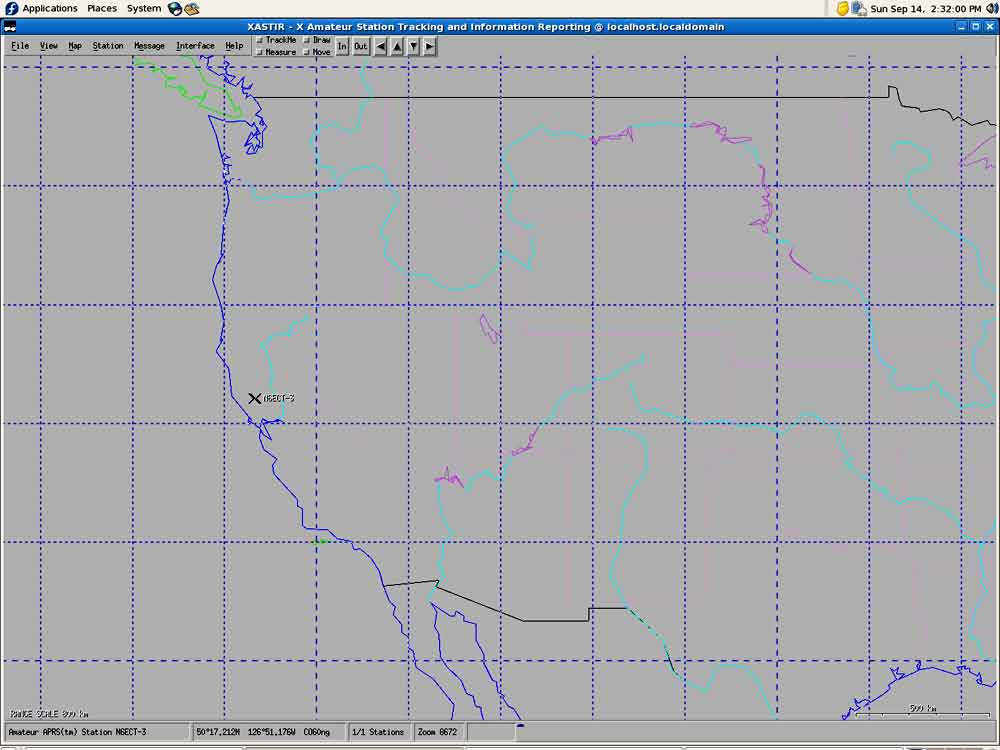
(200809.14)
I lost a little over eight weeks of outside chores, during the Summer, due to Northern California fires and still have to get to the end of October before fire danger starts to fade.
Inside was miserable because we had to turn off air conditioning because it sucked smoke into the house. We used portable 'swamp coolers' to lower the temperature. The average day temperature of the (house) computer room during that time was 113.7 f. degrees; (otoh) I have another area where I can work and this is what has been happening.
Remember the (above) used laptop (controller for the sensors, WX, APRS) that died three days after warranty ;-) well, I was extremely brutal and fixed it, but have to explain something here.
One of my great pleasures in the past was building electronic stuff...and all was fine until the '80s, when multi-layered boards became more popular, and I could no longer, using my workbench magnifier, see components.
(tmalss/imo) Anything beyond two layers is next to impossible to repair and belongs in the junk box.
Having said that, I employed a few tricks to see if I could discover where the problem was.
[THE FOLLOWING IS NOT A RECOMMENDATION AND WILL DESTROY YOUR COMPUTER, DO NOT FOLLOW THESE INSTRUCTIONS, DO NOT DO THIS AT HOME - THIS IS NOT ADVICE - THIS IS AN EXPLAINATION OF MY EXPERIENCE !!!]
The first thing I did was remove the hard drive, put it in a 'moisture proof' bag, and stuck it in the freezer compartment of the refrigerator for about four (4) hours. [I have discovered this will sometimes let me know if it is the drive or (more than likely) a problem with the motherboard.] I then popped the drive back into the machine and got it to a point where I could, over the process of a week, install an iso of the original XP Pro w/SP2 image.
I then put the entire notebook (drive installed) in a larger moisture proof bag, let it sit in the freezer for another four (4) hours, and started 'blasting the drive' with an older, complete, version of 'Pro' I had for a broken machine in storage, until I got it to reformat the drive, and start to load the system. [Note: Due to confusing laws about reporting 'things', I am leaving out my notes as to the actual cause of 'this mess'.]

When the 'installer' reached the point of asking for the serial number, I removed the old XP Pro installer disk, replaced it with the disk containing the iso image, rebooted, and the original SP2 image installed perfectly.
Having reached this point, I decided to re-install XP Pro again, except, this time, I pre-figured the size of installs, and created two partitions; one for Fedora 6 (I have a set of disks, thanks Hank!) and one for XP Pro
I installed XP Pro first on drive C:, and then did all the updates (19 hours via dial-up).

If anything were to wipe out access to the XP Pro system, I wanted something that would allow me to monitor that, so I installed Fedora 6 (GNU Linux) and did 247 updates (48 hours via dial-up). [Note: I have ~BSD and GNU ~Linux (64 bit) developer experience and was on the OS-2 (IBM) and OS X (Apple) developer teams. (For example, I wrote the first C based controller for the Yaesu RS-232 interface, which was announced on an early Amateur Radio list, before the Internet, and originally written on a Sun 360-C, that was in our basement at Toad Hall.)
Beta Test FRG-9600 Source Code Fragment
Jun 13 1989, 7:46 pm
Curtis Spangler
Source: rec.ham-radioI have a source code fragment for controlling the YAESU FRG-9600 scanner. This fragment is translated from the Basic programme listed in the FRG-9600 Service Manual to the C programming language using Turbo C version 1.5. It may work on other YAESU (C.A.T.) devices with modification (not tested). If you are interested in 'beta testing' this code please send email.
--
Curtis Spangler {sun,pacbell,uunet,pyramid,amdahl}!hoptoad!cas cas@toad.com
N6ECT P.O. Box 170031, San Francisco, California, 94117-0031
"Without love in the dream, It will never come true." J. Garcia / R. Hunter]

[Note: For some ??? unknown reason (I have no intention of exploring, other than providing a fix.) both Fedora and XP would no longer (on the NC-6000) do 'reverse look-up'; meaning, I could connect to a Website using an IP number but NOT via domain and extension (flyingsnail.com, etc.) using my original DNS numbers.
In order to fix this, on both operating systems, I had to change DNS lookup from my host DNS numbers to ones provided by Open DNS (primary and secondary): 208.67.222.222 and 208.67.220.220 - and Internet access was restored.]
The next thing I did was hook up an old Kantronics PacketCommunicator 3 TNC to the notebook and installed UI-View16 on the XP side.

I downloaded the source to XASTIR, compiled it on the Fedora side and in a few months will compile it for Mac OS X.

Click for large image - [Note:
Screenshot is a 'stock' compiled install of Xastir on Fedora 6. More later.]
I am about at a place where I can return to the completion of the Seismic Shed and (fwiw) all sensors continue to work without problem (The VolksMeter is truly amazing!).
You have probably noticed there are seismic and weather updates happening again and they are running on a new HP laptop 'controller' with an "Intel Centrino" processor, under Windows Vista (Office). I'll comment on Vista later, but it is not good.
Finally, time for the 'mini-lecture' again (-; The above work will allow me to explore a less expensive approach to ARPSN.
What I am using now (the model works for me) may appear expensive at the moment, but will be reduced (in cost) as time moves forward.